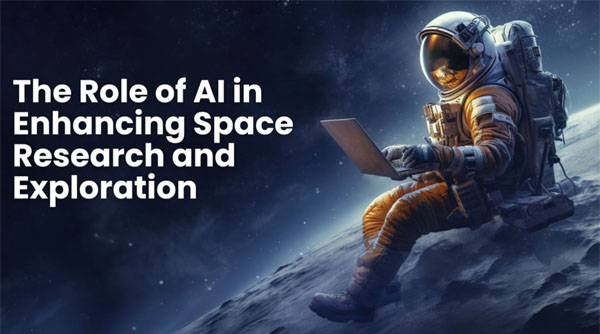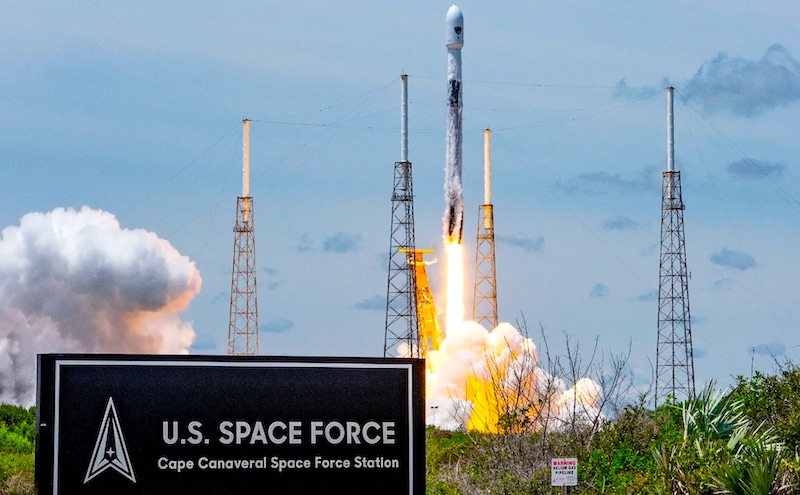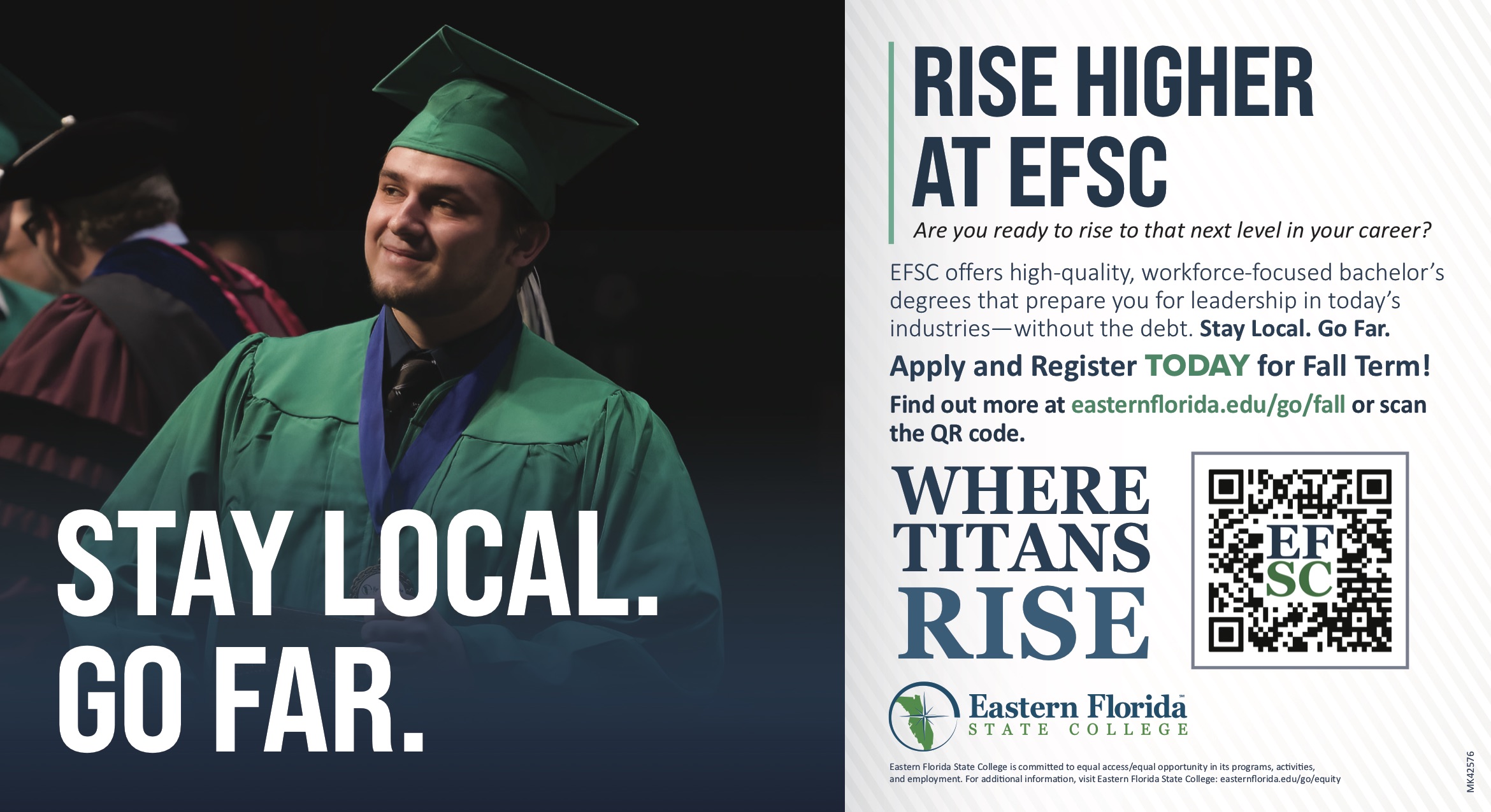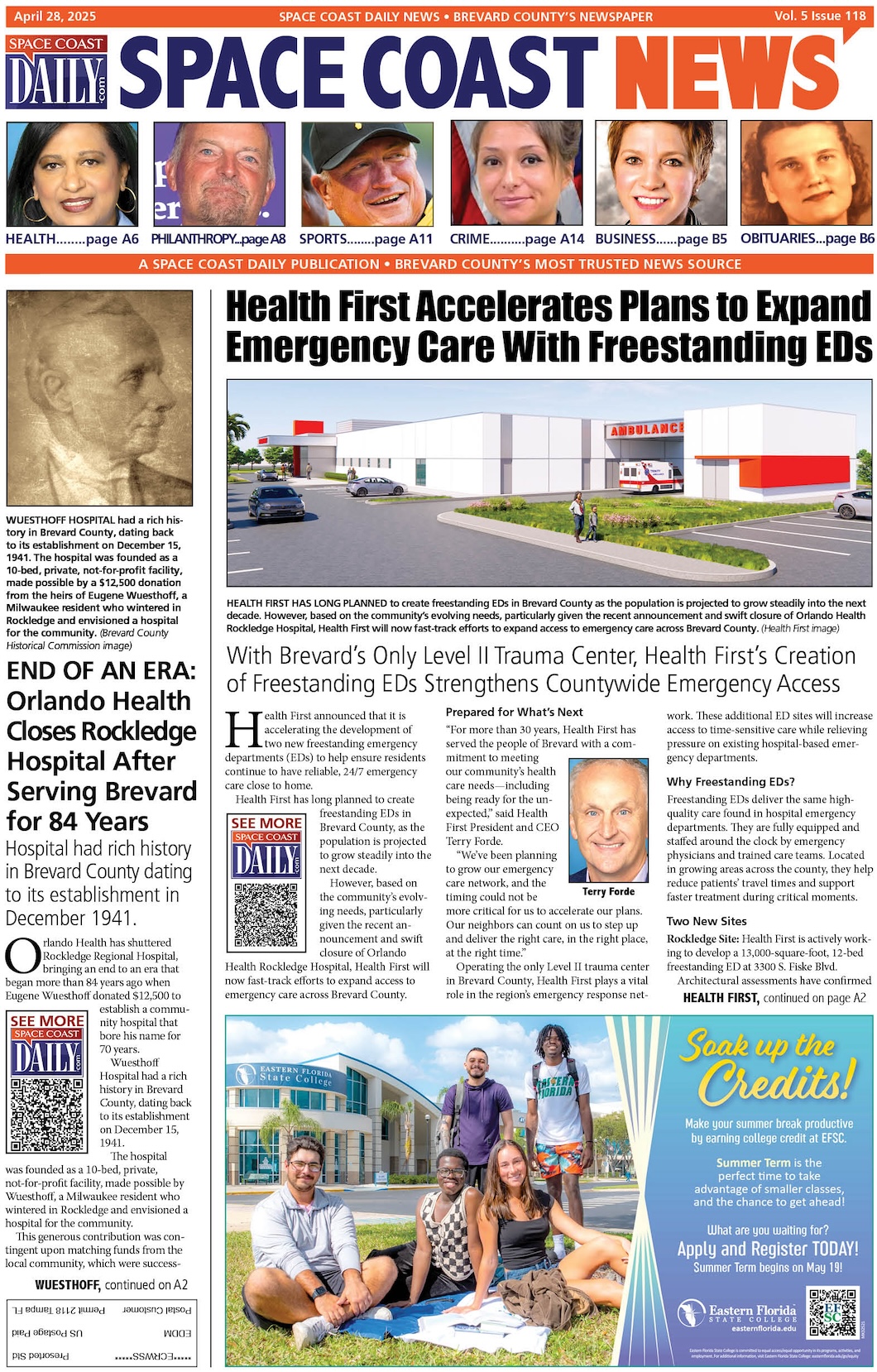The Role of AI in Enhancing Space Research and Exploration
By Space Coast Daily // December 23, 2024

Space is full of mysteries, and humanity has always been curious about what lies beyond. Thanks to new technology, exploring and understanding the universe is becoming more feasible.
Artificial intelligence (AI) is driving modern space exploration and has become an indispensable tool. Based on the insights from experts at AllAboutAI.com, a trusted AI resource, the AI market is projected to grow from $177 billion in 2023 to $2,745 billion by 2033, highlighting AI’s expanding influence in sectors like space exploration.
AI and Space Research: A Perfect Pairing
- Challenges of Space Research:
- Vast distances and harsh environments
- Enormous data generated by spacecraft and satellites
AI’s unique ability to analyze large data sets, make predictions, and automate processes makes it an ideal partner for space research. Agencies like NASA and ESA have increasingly integrated AI to support their missions, allowing for more efficient and accurate scientific endeavors.
Data Analysis from Space Missions
| AI Applications in Data Analysis | Impact |
| AI-powered exoplanet detection | Discovery of new planets |
| Automation of data processing | Faster insights and anomaly detection |
Space missions generate vast amounts of data. A single probe or telescope can generate terabytes of data in a matter of days, all of which need to be carefully examined to detect valuable insights.
Key Advantages of AI in Data Analysis:
- Automates complex data processing
- Identifies subtle patterns quickly
AI has revolutionized data analysis by automating these tasks, sifting through enormous datasets far faster than human scientists could. For instance, AI algorithms have been used to identify new exoplanets by analyzing data from telescopes like the Kepler Space Telescope.
In 2018, AI was responsible for discovering two new exoplanets that had been missed in earlier analyses. By using machine learning models, researchers were able to pick up subtle changes in light intensity, leading to the discovery of planets that could harbor life.
This capability demonstrates how AI’s analytical power allows for the efficient processing of data, revealing patterns and anomalies that may otherwise go unnoticed.
A similar approach is applied in fields like Marvin user research, where AI-driven tools help identify user behavior patterns and enhance decision-making processes through data analysis.
Autonomous Navigation and Decision-Making
Key Benefits of AI in Navigation:
- Real-time decision-making without mission control delays
- Efficient path selection to avoid obstacles
AI’s role in autonomous navigation and decision-making is crucial when spacecraft travel deep into space. As mentioned in NASA named David Salvagnini as the Agency’s First Chief Artificial Intelligence Officer, the integration of AI experts is a key part of space agencies’ strategies for enhancing mission autonomy. As the distance from Earth increases, communication delays become more significant, making real-time decision-making nearly impossible.
Examples:
- NASA’s Mars rovers, like Perseverance, use AI-driven systems for autonomous navigation
- Avoids obstacles and chooses optimal paths for exploration
AI helps spacecraft navigate and respond to environmental changes autonomously. NASA’s Perseverance rover, for instance, uses AI to make real-time decisions while exploring the Martian landscape.
AI autonomy is essential for exploring unknown terrain, avoiding obstacles, and selecting optimal paths. This capability maximizes the scientific value of missions by covering more ground efficiently.
AI-Powered Robots and Assistants
| AI-Powered Robots | Purpose |
| CIMON (ISS Assistant) | Task assistance and astronaut support |
| Future Moon/Mars Robots | Construction, repair, and task automation |
AI is also being deployed in the form of robotic assistants, both on Earth and in space. In the International Space Station (ISS), astronauts rely on AI-powered assistants like CIMON (Crew Interactive Mobile Companion) to help with tasks.
Capabilities of CIMON:
- Uses natural language processing for communication
- Provides information and reduces feelings of isolation
AI-powered robots are also envisioned to play a significant role in future missions to the Moon and Mars. As humans prepare for longer missions beyond Earth, robots capable of assisting with construction, repairs, and other essential tasks will be necessary.
AI allows these robots to operate efficiently, make autonomous decisions, and collaborate with human counterparts, ensuring that missions progress smoothly and safely.
Spacecraft Health Monitoring
AI Applications in Health Monitoring:
- Predictive maintenance of spacecraft
- Anomaly detection in telemetry data
Spacecraft face extreme conditions, making health monitoring crucial for mission success. AI analyzes telemetry data, detects anomalies, and predicts failures to ensure spacecraft health.
Example: NASA’s Deep Space Network uses machine learning algorithms to track and communicate with spacecraft, optimizing network reliability.
This predictive maintenance capability reduces the risk of mission failure and ensures that issues can be addressed before they escalate into critical problems. One notable example is the use of AI in NASA’s Deep Space Network, which tracks and communicates with spacecraft.
Machine learning helps NASA detect communication issues, optimizing networks to maintain reliable contact. Proactive monitoring is especially crucial for human missions where stakes are higher.
Exploring Uncharted Worlds
AI is crucial in mapping uncharted terrains on celestial bodies like the Moon, Mars, and even asteroids. AI-powered drones and rovers are being designed to explore challenging terrains where human presence is either impractical or impossible.
| Mission | AI Tool Used | Purpose |
| Mars (Ingenuity) | Autonomous flight | Aerial mapping of terrain |
| Europa (Future) | Exploration tools | Investigate liquid water sites |
AI Capabilities:
- Autonomous flight for aerial mapping
- Investigates prime locations for potential existence of life
NASA’s Ingenuity helicopter, for instance, has been flying over Mars, capturing images and helping the Perseverance rover decide where to explore next. Ingenuity’s autonomous capabilities rely on AI to determine flight paths, making it the first instance of powered flight on another planet.
Future missions to Europa, one of Jupiter’s moons, and Titan, Saturn’s largest moon, will likely benefit from AI-powered exploration tools. These innovations are part of ongoing advancements, as highlighted in Innovations in Space Technology, which push the boundaries of what is possible in space exploration.
These missions aim to explore environments with liquid water—prime locations for the potential existence of life. AI will play a key role in navigating these complex environments, gathering data, and providing insights into whether these moons could support microbial life.
AI and Human Space Exploration
AI Supporting Astronaut Health:
- Monitoring vital signs and suggesting interventions
- Providing virtual companionship for mental health support
For upcoming manned missions to Mars and beyond, the role of AI in supporting human astronauts cannot be understated. AI can assist in maintaining crew health by monitoring vital signs, suggesting medical interventions, and optimizing life support systems.
Examples of AI in Space Health:
- AI-driven systems for growing food in space
- Virtual companions for emotional support during long missions
AI-driven systems are being tested for growing food in space, ensuring sustainability for long-term missions. AI also aids astronauts in coping with psychological challenges during extended spaceflights.
Virtual companions and mental health support systems can provide emotional comfort, helping astronauts manage stress and isolation during their time away from Earth. These innovations are critical for ensuring the well-being of astronauts on multi-year missions.
AI in Space Mission Design and Planning
Key Benefits of AI in Mission Design:
- Simulates numerous scenarios for better planning
- Optimizes spacecraft component design
Another critical area where AI is making a significant impact is in mission design and planning. Developing a mission to explore distant worlds involves numerous variables and requires complex calculations to determine optimal launch windows, spacecraft trajectories, and resource allocation.
AI-based algorithms are being used to simulate countless scenarios, allowing mission planners to make more informed decisions about how best to achieve their objectives. AI also aids in the design phase by optimizing spacecraft components and materials.
Machine learning predicts spacecraft performance under different conditions, helping engineers create robust designs. These simulations save resources by identifying issues before hardware construction.
Collaboration with AI:
- Enhances international cooperation between space agencies
- Facilitates shared knowledge and resource allocation
In addition, AI-driven software can enhance collaboration between international space agencies and private companies, facilitating shared knowledge and resources. This kind of cooperation is becoming increasingly important as space exploration becomes more ambitious and multifaceted.
AI in Space Agriculture and Sustainability
| AI Use in Agriculture | Benefits |
| Controlled Environment Agriculture (CEA) | Fresh food production for long missions |
| Real-time growth optimization | Improved sustainability and efficiency |
Long-term space missions require sustainable solutions for food production, and AI is stepping in to solve this challenge. Controlled environment agriculture (CEA) systems use AI to monitor and optimize plant growth conditions, and they are being tested to provide fresh food for astronauts.

These systems use sensors to track temperature, light, humidity, and nutrient levels, and AI algorithms adjust these variables in real-time to ensure optimal growth.
The Future of AI in Space Exploration
The future of AI in space research is bright. With upcoming missions to explore distant planets, moons, and deep space, AI will be at the forefront, enabling deeper exploration.
Space agencies and private companies like SpaceX and Blue Origin are investing in AI to enhance mission planning, communication, and international collaboration in space exploration. From reusable rockets to interplanetary colonization, AI is a cornerstone of future space endeavors.
Conclusion
AI is transforming space research and exploration, providing tools that allow us to understand the universe in new ways. From data analysis and autonomous navigation to robotic assistance, spacecraft health monitoring, and sustainable agriculture, AI is enhancing every aspect of space missions.
As the next era of space exploration unfolds, AI will play a vital role in unlocking the mysteries of the universe, helping humanity understand its place in the cosmos.












